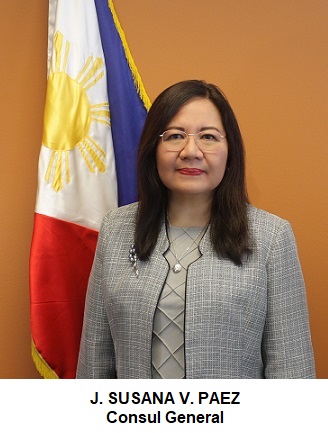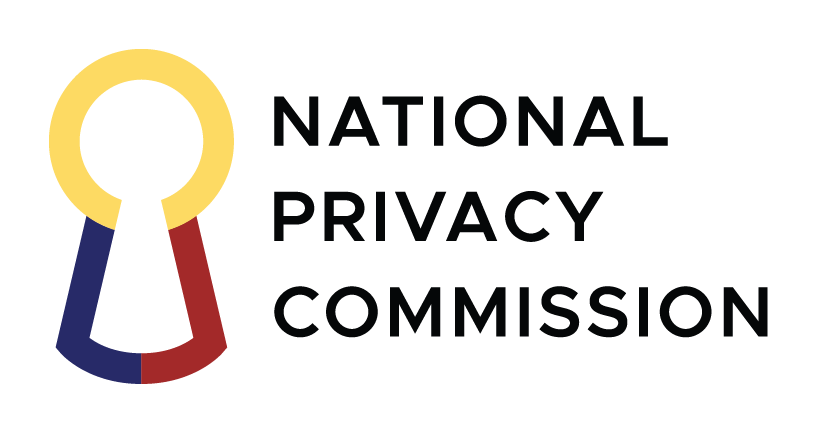
Mabuhay!
Welcome to the website of the Philippine Consulate General, Chicago!
We have features on our consular services, trade and investment opportunities and tourism destinations to visit in the Philippines. Passport and visa forms, among others, may be downloaded, thus making the application process easier. We also have links to the websites of various Philippine Missions abroad, Philippine Government agencies, business chambers and leading newspapers.
Through this website, we hope to bring our services closer to your doorstep as well as make available to you a wide range of useful information and resources about the Philippines.
We would appreciate hearing from you, so feel free to email, call or visit us in person.
Tuloy po kayo!
CONSULAR JURISDICTION
| ILLINOIS | MINNESOTA | OHIO |
| INDIANA | MISSOURI | MICHIGAN |
| IOWA | NEBRASKA | SOUTH DAKOTA |
| KANSAS | NORTH DAKOTA | WISCONSIN |
Economic Structure/ Indicators
Economic Structure
|
Major Industries |
Food, petrochemicals, chemicals, electronics and electrical machinery, footwear and garments, beverages |
|
Major Exports |
Electronic components, articles of apparel and clothing accessories, metal products |
|
Major Imports |
Transport equipment, Iron and Steel, Materials/Accessories Imported on consignment basis for the manufacture of Other Electrical and Electronic Machinery and Equipment and Cereals and Cereal Preparations. |
|
Major Trading Partners |
USA, Japan, Netherlands, Singapore, Taiwan, HongKong, Malaysia, Germany, Rep. of Korea and PROC |
|
Major Investors |
USA, Japan, Germany, Singapore, Taiwan, Argentina, Virgin Islands, France, Great Britain |
Economic Indicators
|
Population |
|
|
Total Population (2000) |
76.5 M |
|
Population Projection (2007) |
88.7 M |
|
Average Annual Family Income (2003) |
Php 147,888 |
|
Underemployment Rate (October 2006) |
20.4% |
|
Unemployment Rate (October 2006) |
7.3% |
|
Selected Macroeconomic Statistics |
|
|
Gross National Product (Growth Rate) (2005) |
5.7% |
|
Gross Domestic Product (Growth Rate) (2005) |
5.1% |
|
Inflation Rate (January 2006) |
6.7% |
|
Selected Domestic Interest Rates (%) |
|
|
Treasury Bill Rates (All Maturities) (January 2006) |
4.91% |
|
Bank Average Lending Rates (December 2005) |
10.79% |
|
Average Exchange Rate 1US$:1Peso (January 2006) |
52.617 |
|
Trade Statistics |
|
|
Exports (in million US $) (November 2006) |
4,022 |
|
Imports (in million US $) (November 2006) |
4,508 |
|
Balance of Trade (in million US $) (November 2006) |
(487) |
Basic Facts
LOCATION AND GEOGRAPHY
The Philippines is an archipelago of some 7,107 islands. It has a land area of about 300,000 square kilometers and a coastline of 36,289 kilometers. It is divided into three major island groups: Luzon in the north, Visayas in the center, and Mindanao farther down in the south.
Strategically located in the Asia Pacific region, the Philippines is readily accessible from the major travel centers of the world. Travel time from Hongkong to Manila is an hour and 20 minutes. From Singapore, 3 hours; Bangkok, 3 hours; Tokyo, 3 hours and 35 minutes; Sydney, 7 hours and 40 minutes; London, 14 hours; Frankfurt, 14 hours; San Francisco, 11 hours and 50 minutes. Manila is the country's capital and main port city and Cebu, in the south, is the second international gateway.
The climate is generally tropical, with two distinct seasons ranging from dry (between November and May) to rainy (usually from June to October). Average rainfall is about 2,030 millimeters and temperatures ranges from a low of 20 C to a high of 32 C.
GOVERNMENT AND POLITICAL SYSTEM
The Republic of the Philippines is a constitutional democracy, with the President elected as Head of State/Government. The current President is H.E. Benigno S. Aquino III.
The national government has three separate and co-equal branches, the executive, legislative, and judicial, which exercise a system of checks and balances.
The Executive Branch consists of the President and his/her Cabinet; the Legislative Branch is composed of the House of Representatives and the Senate; and the Judicial Branch, the system of courts is headed by the Supreme Court.
Local governments are similar to the executive branch in structure and function. Provinces are headed by governors; cities and municipalities by mayors; and the barangays, locally organized communities, by barangay chairpersons.
PEOPLE
The Philippines has a population of about 85.2 million people (2005). It is a young population with 50% of the people are below 22 years old. The labor force participation rate is 64.8% or around 55 million.
The country has one of the most highly educated populations in Southeast Asia with a literacy rate of 94.6%. English is widely spoken and understood, and is used extensively in business, government, and education.
HEAD OF STATE
President Benigno S. Aquino III
CAPITAL
Manila
LANGUAGES
The national language is Filipino although there are at least 87 regional languages. English, widely spoken and understood, is the language used for most business and legal transactions. Hokkien, Cantonese, and Mandarin are spoken by older members of the Filipino-Chinese community.
LITERACY RATE
93.9%
RELIGION
At least 81 percent of Filipinos belong to the Roman Catholic faith. About 5 percent is Muslims who can be found predominantly in Mindanao. The rest of the population is made up mostly of smaller Protestant and Christian denominations.
The Philippines : History
Historians believe the Philippines dates back to the Paleolithic age. Based on the archeological artifacts recovered, Filipino society and culture were fairly developed prior to contacts with other countries. Filipinos had commercial relations early on with China, Indo-China, Malaysia, India, and the Arab countries. Chinese silk, porcelain, jars, gold, ivory, and beads were traded for wax, bird's nest, teakwood, rattan, pearls, precious stones, and other marine and forest products.
Ferdinand Magellan came to the Philippines on March 16, 1521 and claimed the country for the Spanish Crown. A colonial government was established in Manila in 1571. Spain introduced changes in the political, social, and cultural life of the people. One of these is Christianity. In 1896, the Filipinos staged the first nationalistic revolution in Asia against the Spaniards. The 1896 Revolution was the culmination of a succession of revolts against Spanish oppression. The death by musketry of Dr. Jose Rizal, who led the reform movement, fueled the fires of revolution.
On June 12, 1898, leaders of the revolution declared the country's sovereign state and proclaimed the first Republic of the Philippines, the first constitutional democracy in Asia. Meanwhile, Spain declared war against the United States over Cuba and was defeated. As an offshoot, the Philippines was ceded to America by Spain through the Treaty of Paris.
Under American rule, agriculture, commerce, and trade developed. Among the changes they introduced were: the modernization of transportation and communication, the improvement of banking and currency, and a system of public education.
At the outbreak of the Second World War, Japan occupied the country. In 1945, the Americans under MacArthur liberated the country and granted it independence in 1946.
The Republic of the Philippines was proclaimed on July 4, 1946, with Manuel Roxas as President. Massive rehabilitation and rebuilding out of the devastation brought about by the war was started. In 1972, Martial Law was declared by then President Ferdinand Marcos. Political repression and economic deterioration during the Martial Law Years resulted in the historic "People Power" Revolution of February 25, 1986. This led to the proclamation of Corazon C. Aquino as President of the Philippines.
President Aquino restored the democratic institutions in the country. A Constitution, ratified on February 2, 1987, provided for a tripartite system: the Executive, the Legislative, and the Judiciary. This was the type of government before Marcos declared Martial Law and adopted a modified parliamentary government. Aquino also restored the freedoms of speech, press, and of assembly.
On June 30, 1992, Fidel V. Ramos became the 12th President of the Philippine Republic. President Ramos, a hero of the 1986 EDSA uprising, anchored his government on twin themes of "people empowerment" and "global excellence" as the engines of economic growth and social equity.
On the 100th anniversary year of the Proclamation of Philippine Independence, Joseph Ejercito Estrada became the 13th President of the Philippines.
On 20 January 2001, Gloria Macapagal-Arroyo, through another popular uprising called "People Power 2", unseated then President Joseph Ejercito Estrada. The daughter of former President Diosdado Macapagal, President Arroyo's vision of a "Strong Republic" is governed on four pillars: poverty alleviation, good governance, new politics of party programs and leadership by example.















